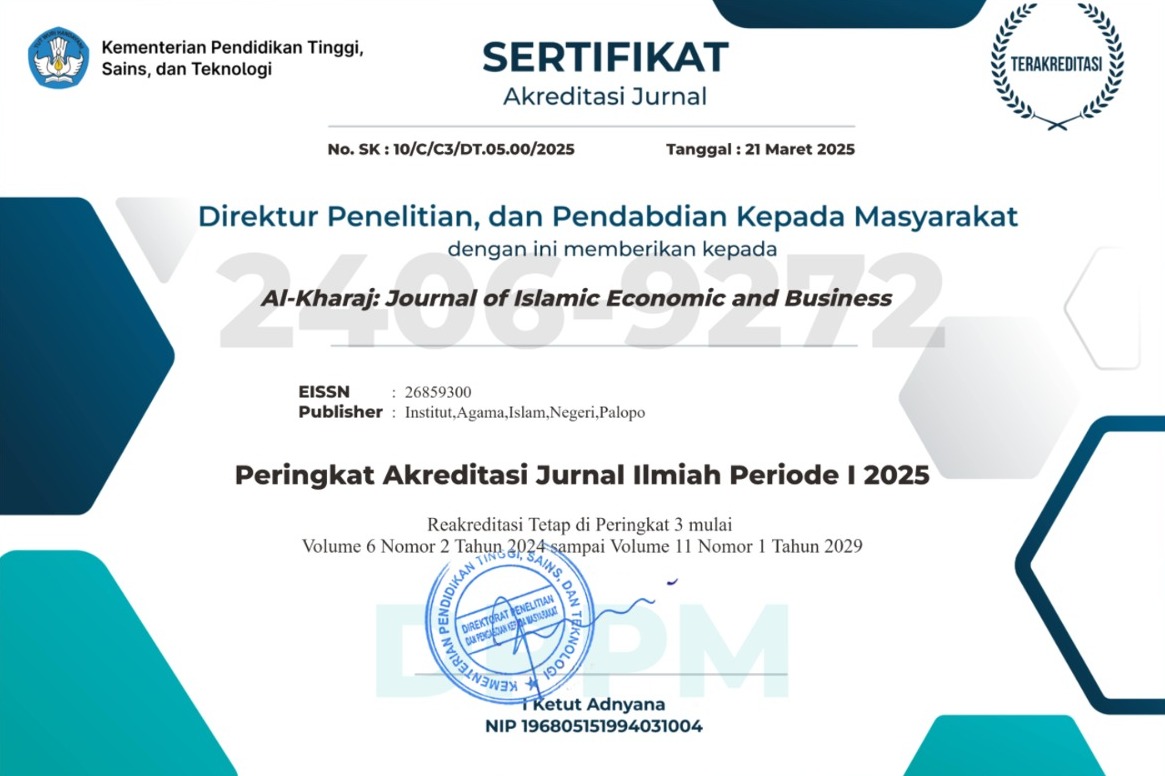The Influence of Perceived Nostalgia and Perceived Value on Post Purchase Intention Through Brand Trust on Levi's Products as a Mediating Variable (Study on Levi's Gen Z Product Users on the TikTok Platform @Levisstoreid)
DOI:
https://doi.org/10.24256/kharaj.v7i2.7410Keywords:
Perceived Nostalgia, Perceived Value, Post Purchase Intention, Brand Trust, Tiktok, Levi's, Gen Z.Abstract
This study aims to analyze the influence of Perceived Nostalgia and Perceived Value on Post Purchase Intention, with Brand Trust as a mediating variable, on Gen Z consumers who use Levi's products on the Tiktok platform. The phenomenon of increasing emotional attachment of young consumers to products with historical value and past experiences encourages the importance of understanding emotional value-based marketing strategies. Using a quantitative approach and path analysis through SPSS software, this study involved 95 active respondents who fit the demographic criteria. The results showed that Perceived Nostalgia and Perceived Value had a significant effect on Brand Trust, and directly increased Post Purchase Intention. However, Brand Trust did not show a significant effect on Post Purchase Intention, indicating that repurchase intention was more influenced by emotional experience and perceived value than brand trust itself. These findings provide strategic implications for marketers in building a more personal, emotional, and relevant approach to young consumers through adaptive and nostalgia-based digital campaigns. This study also enriches the marketing literature by highlighting the dynamics of Gen Z behavior in the context of heritage products and social media use.
References
Chandra, JR, Adiwijaya, M., & Jaolis, F. (2023). The effect of brand trust on post-purchase intention in a digital environment. Indonesian Journal of Digital Marketing, 5(2), 88–95.
Chaudhuri, A., & Holbrook, M. B. (2001). The chain of effects from brand trust and brand affect to brand performance: The role of brand loyalty. Journal of Marketing, 65(2), 81–93. https://doi.org/10.1509/jmkg.65.2.81.18255
Chiu, C.-M., Hsu, M.-H., Lai, H., & Chang, C.-M. (2009). Re-examining the influence of trust on online repeat purchase intention: The moderating role of habit and its antecedents. Decision Support Systems, 53(4), 835–845.
Delgado-Ballester, E. (2011). Building customer trust in the service context: Antecedents, consequences and moderating effects. Managing Service Quality, 21(4), 347–366.
Doney, P. M., & Cannon, J. P. (1997). An examination of the nature of trust in buyer–seller relationships. Journal of Marketing, 61(2), 35–51.
Ezzat, R. (2022). Nostalgia marketing and customer loyalty: The mediating role of brand trust. International Journal of Marketing Studies, 14(1), 45–58.
Fariz, M. (2018). The influence of brand trust on repurchase intention of online fashion products. Indonesian Journal of Management and Business, 6(1), 44–51.
Ghozali, I. (2018). Multivariate Analysis Application with IBM SPSS 25 Program. Diponegoro University Publishing Agency.
Hidayati, AN, Isabela, BA, Yuwananda, YSS, & Gunadi, W. (2021). The role of brand trust in mediating the relationship between customer experience and loyalty. Journal of Marketing Management, 15(2), 89–101.
Holak, S. L., & Havlena, W. J. (1998). Feelings, fantasies, and memories: An examination of the emotional components of nostalgia. Journal of Business Research, 42(3), 217–226.
Lau, G. T., & Lee, S. H. (1999). Consumers' trust in a brand and the link to brand loyalty. Journal of Market-Focused Management, 4(4), 341–370.
Muehling, D.D., & Pascal, V.J. (2011). An empirical investigation of the differential effects of personal, historical, and non-personal‐nostalgic advertising on consumer responses. Journal of Advertising, 40(2), 107–122.
Nathadiharja, SS, Tambun, S., & Ivada, T. (2024). Perceived nostalgia and brand loyalty in the younger generation. Journal of Economics and Business, 9(1), 55–64.
Pascal, V. J., Sprott, D. E., & Muehling, D. D. (2002). The influence of evoked nostalgia on consumers' responses to advertising: An exploratory study. Journal of Current Issues & Research in Advertising, 24(1), 39–49.
Pratiwi, RS, Salim, U., & Sunaryo. (2021). The influence of perceived value on brand trust in online fashion shopping. Scientific Journal of Economics and Business, 17(1), 29–40.
Suryani, T. (2022). Analysis of customer value on satisfaction and repurchase intention. Journal of Economics and Management, 5(3), 221–230.
Sweeney, J. C., & Soutar, G. N. (2001). Consumer perceived value: The development of a multiple item scale. Journal of Retailing, 77(2), 203–220.
Vardani, VD (2023). The effect of perceived value on post-purchase intention on branded fashion products (Thesis, State University of Malang).
Wang, F., Head, M., & Archer, N. (2004). Consumer e‐health information seeking behavior: A literature review. International Journal of Medical Informatics, 73(3), 217–235.
Wildschut, T., Sedikides, C., Arndt, J., & Routledge, C. (2006). Nostalgia: Content, triggers, functions. Journal of Personality and Social Psychology, 91(5), 975–993.
Zeithaml, V. A. (1988). Consumer perceptions of price, quality, and value: A means–end model and synthesis of evidence. Journal of Marketing, 52(3), 2–22.
Databoks. (2023, May 15). Distribution of TikTok users in Indonesia is dominated by the age group 18-24 years. https://databoks.katadata.co.id/datapublish/2023/05/15/sebaran-pengguna-tiktok-di-indonesia-didominasi-usia-18-24-tahun
Downloads
Published
How to Cite
Issue
Section
Citation Check
License
Copyright (c) 2025 Istifani Salsabila Putri, Amma Fazizah

This work is licensed under a Creative Commons Attribution-ShareAlike 4.0 International License.
Authors retain copyright and grant the journal right of first publication with the work simultaneously licensed under a Creative Commons Attribution-ShareAlike 4.0 International License. In line with the license, authors are allowed to share and adapt the material. In addition, the material must be given appropriate credit, provided with a link to the license, and indicated if changes were made. If authors remix, transform or build upon the material, authors must distribute their contributions under the same license as the original.









